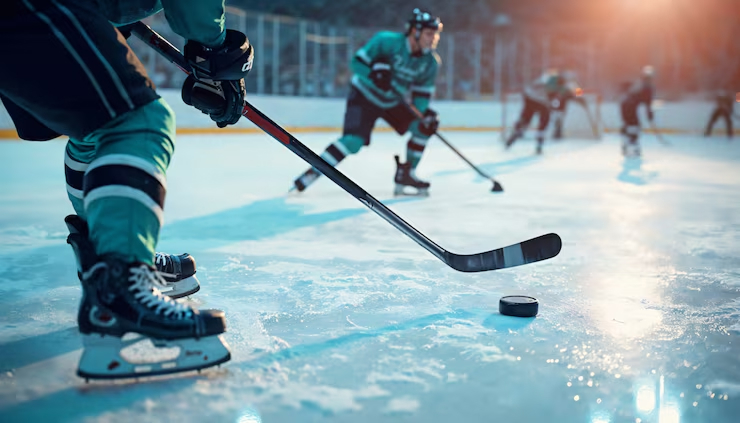Ice hockey is one of the most dynamic and demanding sports played on ice. It brings together speed, skill, and teamwork in a thrilling mix of offence and defence. Two teams compete to score goals by hitting a small rubber puck into the opponent’s net using curved sticks. To a newcomer, the sport may seem chaotic, but every movement follows a clear set of rules and traditions that give it structure and balance.

Hockey Rules and Gameplay
A professional ice hockey game consists of three periods of 20 minutes each, with short breaks between them. Each team has six players on the ice — one goalkeeper and five skaters, divided into forwards and defencemen. The goal is to outscore the opponent by putting the puck into their net while defending your own.
The rink is split into three zones: defensive, neutral, and attacking. Players must follow offside rules, which prevent attackers from entering the offensive zone before the puck does. Icing occurs when a player shoots the puck across both the centre red line and the opposing goal line without it being touched. These infractions stop the game and result in a face-off, a method used to restart play.
Hockey’s fast tempo demands constant attention to penalties. When a player breaks a rule — for example, by tripping, slashing, or holding an opponent — they are sent to the penalty box. Most minor penalties last two minutes, leaving their team short-handed. The other side then gains a power play, a key strategic opportunity to score. Power plays test a team’s discipline and creativity, as one mistake can change the score quickly.

Physical play has always been part of hockey’s appeal. Legal body checking is permitted to separate an opponent from the puck, but dangerous hits are penalised. Fighting, although against the written rules, remains an accepted element of the sport under controlled circumstances. Referees allow brief altercations before stepping in to restore order. This tradition, while controversial, is rooted in hockey’s culture and is seen by many as a way to release tension and protect teammates.
Equipment also plays a vital role in player safety. Helmets, mouthguards, padded gloves, and shoulder pads are standard. Goalkeepers wear even heavier protection because of the speed and hardness of the puck, which can exceed 100 miles per hour.
Players and Careers
Becoming a hockey player requires long-term dedication. Many start skating as early as four or five years old, progressing through local clubs and junior teams. Training focuses on skating speed, stickhandling, shooting accuracy, and tactical awareness. Strength and conditioning are essential too, as players must balance explosive movement with endurance. As the sport grows, interest from wider audiences — including analytical communities that often follow trends on bookmakers not on GamStop — has also boosted visibility for emerging talent.
In the United Kingdom, hockey continues to develop in popularity. The Elite Ice Hockey League (EIHL) is the top-tier competition, featuring British and overseas players. While it does not match the salaries or exposure of the North American NHL, it offers a professional path for talented athletes. Salaries in the UK vary — some players earn a modest income, while top professionals make a comfortable living, often supported by housing and bonuses.
A career in hockey can also include representing national teams in international tournaments such as the IIHF World Championship or the Winter Olympics. These events showcase the sport’s diversity and the high level of skill across different countries.
Beyond active play, many athletes stay connected to hockey after retirement. Some become coaches, referees, or scouts. Others move into media work, analysing games or sharing insights through commentary. The sport creates a lasting community where passion and respect for the game continue long after a player’s final match.
Learn More
For readers who want to explore hockey in more detail, the following articles offer clear and practical insights into key aspects of the game:
➡ What Is a Power Play in Hockey
Discover how a power play works, what gives one team a temporary advantage, and why it can change the momentum of a match in seconds.
➡ Why Is Fighting Allowed in Hockey
Learn about the history and reasoning behind fighting in hockey, and how referees manage it to maintain fairness and control.
➡ How Much Do Ice Hockey Players Earn in UK
Read about average salaries in the UK’s professional leagues, and what factors influence a player’s earnings and career stability.
➡ Who Is the Best Hockey Player in the World
Find out which players stand out internationally, and what makes them exceptional in terms of skill, consistency, and leadership.
